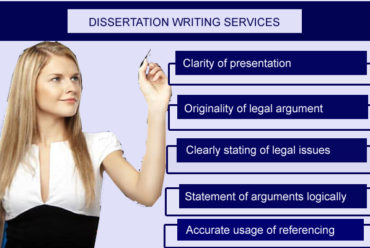Corporate Governance and voluntary disclosure on operating performance
Corporate Governance and voluntary disclosure on operating performance
Note: This is example dissertation on Corporate Governance and voluntary disclosure on operating performance submitted by a student for free publication. If you are the author of this work please let us know for its removal
Nowadays, a company will disclose its information for the purpose of raising capital, expansion and consolidating the basis of the corporate image. Annual report of a company serves as a good tool since it represents a company and is able to promote its value to investors. Information disclosed in an annual report is composed of compulsory and voluntary information. A company has to follow the statutory requirements and accounting standards set up by professional bodies for compulsory information. On the other hand, voluntary information is merely required by the company itself, usually by management’s judgment. The company will strike a balance of benefits and risks before voluntary information is disclosed and therefore, the content of voluntary information varies with companies. The content may contain strategic and marketing plan or what it did regarding social and environmental concern. Previous studies suggest that managers make “good news” disclosures to distinguish their firms from those that are doing less well (Lev and Penman, 1990). Other research argues that managers pre-emptively disclose bad news to minimize legal liability and reputation costs (Skinner,1994).
Sweden has strongly stressed its quality of accounting standards. Those standards require them to disclose more information in annual reports which equip them with high transparency. Sweden provides guidelines for the board that should maximize shareholder value and act for their interest. It recommends the size of the board under which the need for non-executive directors is greater in corporations of larger size. Corporations with global businesses have particular strong motivation for voluntary information disclosure of future planning and current policies because such disclosure can help retain investors’ confidence in the global securities market. This is proved by Törnqvist (1999). Accordingly, globalized corporations will tend to voluntarily reveal more strategic plans in their annual reports. Since voluntary disclosure is decided by management, the linkage between board composition and voluntary disclosure is considerably concerned in Sweden. This leads to its better standards compared with other nations, such as China.

As the economic development undergoes, the stock market in China is blooming since its establishment 1991. As at the end of 2007, 860 listed companies can be found in Shanghai stock exchange (China Securities Regulatory Commission, 2008). On the other hand, Sweden Stockholm exchange has 150-year history but acquired by OMX in 1998. OMX Nordic Exchange Stockholm reported there are 270 listed companies in 2008 (OMX Nordic Exchange, 2008). Sweden has longer-established history of corporate governance than China does. The differences of the requirements of voluntary disclosure between countries will be examined from the corporate governance (CG) and economy points of view.
This study focuses on the relationship between board structure and voluntary disclosure in Chinese industries. Previous studies have found that more independent directors on the board will lead to more voluntary disclosure about corporate strategies in annual reports. The relation between board composition and level of voluntary disclosure in countries like China and Sweden induces this study.
- Research Objectives
The specific objectives of this study will be:
- To examine the effect of corporate governance CG (board composition, voluntary disclosure and audit committee) on operating performance (Earnings per share, Size, Liquidity, Dividends per share (DPS), Return on assets (ROA), and Leverage (LV).)
- To evaluate how the level of strategic information, non-financial information and financial information is influenced by the number of independent directors on the board. By
- To compare and analyze the type of voluntary information disclosed in the studied regions, their motivation-driver and the reason why the nature of voluntary disclosure varies with countries/regions will be examined as well.
- Initial Review of Relevant Literature
Voluntary disclosure has become a main source of investors’ decision to invest in business (Gleason and Lee (2003)). Recent studies also make it clear that management voluntary earnings disclosures are a critical component in the development of information that analysts use in their earnings forecast models. Cotter et al. (2006) and Lin et al. (2008) document that the majority of analysts revise their estimates within one day after the management earnings forecast date. Further, analysts are likely to comply with management’s beatable earnings target goals (Matsumoto, 2002; Richardson, et al. (2004); Baik and Jiang (2006); and Tan et al. (2007). Bikhchandhani, Hirshleifer, and Welch (1992) prove through the generality of informational cascades that a previous analyst revision affects the decision of the following analyst.
However, these voluntary disclosures have different effects on the firm’s performance and the investors decision. For example, voluntary disclosure may be positive or negative considering the purpose of the management of the company and it will impact investors opinion of the firm likewise. So, it is imperative to understand the relationship between corporate governance, board composition, and voluntary disclosure and audit committee) on operating performance (Earnings per share, Size, Liquidity, Dividends per share (DPS), Return on assets (ROA), and Leverage (LV).
Analysts are often viewed as information intermediaries whose job is, in part, to provide interpretations of management’s mandatory and voluntary disclosures Ramnath et al. (2008). As such, they modulate interactions between firms and their investors, and thus affect the transparency of the information environment of the firms they cover. Prior research, however, provides empirical evidence that certain voluntary disclosures by management are biased. For example, Baik and Jiang (2006) replicate an earlier finding by Soffer et al. (2000) that short-term management earnings forecasts tend to be downwardly biased (i.e., pessimistic). Specifically, in their sample of point and range quarterly forecast announcements made between 1995 and 2002 and gathered from First Call’s database, 52% of the observations are downwardly biased as opposed to 29% that are upwardly biased. In addition, Baik and Jiang (2006) find that the likelihood of management forecast pessimism increases in the optimism of analysts’ consensus forecasts before the announcement.
- Research Methods: Justification and Description
The author will use secondary sources of data for this study. This data will be collected from 15-20 companies listed in Hong Kong Stock Market as the samples. The author will use the data to analysis various variables such as CG (board composition, voluntary disclosure, operating performance (Earnings per share, Size, Liquidity, Dividends per share (DPS), Return on assets (ROA), and Leverage (LV).
- Information to be collected
In order to measure the degrees of capacity utilization and competence to generate value as well as productive growth of the studied targets, the production theory will be used. The variables will be processed by the means of data envelopment analysis (DEA), which is a non-parametric analysis. And these data will be used in the first stage.
Lee (2004) said the financial performance is not an indicator of corporate yield. Nevertheless many academic papers have made use of financial performance like the stock price in attempt to analyse the value of ownership, board composition and performance. The researcher aims to explain how DEA functions and relates the production theory applied to suggest a good corporate governance mechanism in this part.
DEA is a technique used for estimation of production frontier. It is a linear mathematical technique which can indicates the productive efficiency of decision-making units (DMUs). It compares efficiency by using the same input to give outputs so as to consider how to maximize inputs to obtain optimal outputs.
After that, the operating efficiency, Earnings per share, Size, Liquidity, Business risk, Dividends per share (DPS), Return on assets (ROA), and Leverage (LV) as well as productivity growth and degree of capacity utilization, which play important roles in the second stage of research, will be reviewed.
- Sources of Data
Using the global governance rating criteria on corporate governance quotient (CGQ) from Institutional Shareholder Services (ISS), this research aims to calculate governance index. Information form Yahoo finance search will also be used for some studied companies. The research will contain some questions quoted from Credit Lyonnais Securities Asia (CLSA).
In order to study companies which are not listed, several search engines, such as Google and Yahoo search engine will be utilized. These engines will help find information of corporate governance for the unlisted companies and annual reports of different companies which are vital for the study. COMPUSTAT database of Standard and Poor’s will be made available because it covers a wide range of information regarding companies all over the world and is considered to be a reliable source of data.
In this paper, accounting information within at least 5 years will be used so that the analysis is capable of revealing some trends. Besides, information which reflects any modifications in respect of corporate governance will be adopted as well if available.
- Analysis Techniques
The financial risk had been taken into account with gearing ratios in many research papers. It is often adopted to trial the linkage between debt and equity. The funding structure of a company can be illustrated by gearing ratio. That is, one is able to understand whether a company relies on shareholders’ investment or borrowing as its main working capital.
Leverage can be achieved by borrowing. It is the aggregate long term and short term debts to net value of a corporate. The more borrowing a corporate has, the less capital from shareholders it requires. The ratio of long term debt to total assets was adopted as a measure of leverage by Anderson and Reeb (2003). Liquidity is an indicator of corporates’ ability to pay their own liabilities, including short term debts and payables. The capability can be illustrated in the ratio of working capital to total assets. The use of these two concepts had been done in Dimelis and Louri (2002). Leverage and liquidity were used as the foundation in order to evaluate corporate performance (return on assets (ROA) divided by total assets).
Limitations
Since secondary data are used throughout the research, not all wanted information, especially corporates’ internal information can be obtained. Additionally, unlike primary data, it becomes unlikely that the analysis in accordance to the resulting data is a real-time analysis.
Furthermore, this study does not contain financial institutions in the sample.
References
Lev, B. and Penman, H., 1990. “Voluntary forecast disclosure, nondisclosure, and stock prices,” Journal of Accounting Research, 28, 49–76.
Skinner, D., 1994. “Why Firms Voluntarily Disclose Bad News,” Journal of Accounting Research, 32 (1), 38-60.
Gleason, C. and C. Lee, 2003. “Analyst Forecast Revisions and Market Price Discovery,” The Accounting Review, 78 (1), 193-225.
Cotter, J., Tuna, I. and P. Wysocki, 2006. “Expectations Management and Beatable Targets: How Do Analysts React to Explicit Earnings Guidance?” Contemporary Accounting Research, 23 (3), 593-624.
Lin, B., Nguyen, L., and Oppenheimer, H, 2008, “The information content of management annual earnings guidance estimates and analysts’ revisions in close proximity to these guidance estimates,” University of Rhode Island working paper.
Matshumoto, D., 2002. “Management’s incentives to avoid negative surprises,” The Accounting Review, 77, 483-514.
Richardson, S., Teoh, S. and P. Wysocki, 2004. “The Walk-down to Beatable Analyst Forecasts: The Role of Equity Issuance and Insider-trading Incentives,” Contemporary Accounting Research, 21 (4), 885-924.-479.
Baik, B. and G. Jiang, 2006. “The Use of Management Forecasts to Dampen Analysts’ Expectations,” Journal of Accounting and Public Policy, 25, 531-553.
Tan, H., Libby, R. and J. Hunton, 2007. “When Do Analysts Adjust for Biases in Management Guidance? Effects of Guidance Track Record and Analysts’ Incentives,” Nanyang Technological University, Cornell University and Bentley College working paper.
Ramnath, S., S. Rock, and P. Shane, 2008. “ Financial Analyst Forecasting Literature: A Taxonomy with Trends and Suggestions for Further Research,” International Journal of Forecasting, 24, 34-75.
Soffer, L., Thiagarajan, R., and Walther, B., 2000. “Earnings preannouncement strategies,” Review of Accounting Studies, 5, 5-26.







You must be logged in to post a comment.